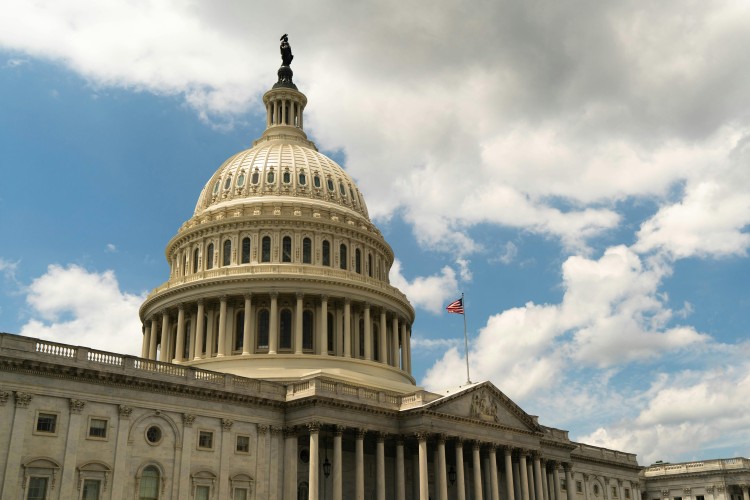Reflections On NAEH 2018: The Path To The End of Youth Homelessness

Since leaving the 2018 NAEH conference, I am now more sure than ever that we can and will end youth homelessness. Don’t hear me wrong – I am well aware of the challenges we face and all the hard work that has gotten us to this place. I know that it’s been no small task to get where we are, and certainly no small task to get to where we’re going, but one thing is for certain: we CAN do it! As I reflect upon NAEH 2018, I have a few important takeaways that I thought might be helpful to share. First, as I said above, these last few days have reaffirmed to me that we as a field are on the right path. That right path, and its eventual outcome, is very clear to me: in the near future, we will see a day where more youth and families are stably housed than ever before, and the experience of homelessness will be rare, brief and non-reoccurring.
What brought me to this conclusion? I knew times were changing during the AWHA’s State of the Movement convening, which was thoughtfully curated and facilitated by the National Youth Forum on Homelessness (NYFH). The event was a joyful opportunity to connect, share, and learn about various policy and practice-related topics. More importantly, though, we recognized the hidden value of mistakes with the covening’s “pillars of f*ck ups,” dedicated to the wrong turns we’ve made along the way. As I tapped on my sticky note, I realized how crucial these mistakes have been in learning how to shape a strategy that actually works for youth and families. But while mistakes have been a crucial part of this process, there’s something even more important to understand: great solutions come from diverse voices leveraging their life experiences and professional training. They come from embracing an openness to change, and an uncompromising commitment that we will do better this time. And most important of all, they come from the youth that we serve. When youth and young leaders are unapologetically present, they transform the environment in a way that no one else can. Suddenly, every “adult” in the room became more honest and transparent. I am thankful for their ability to transform the spaces and conversations, and for the fact that they will hold myself (and our field) accountable to the SO WHAT and THEN WHAT questions. Without them, the path towards ending homelessness would not nearly be so clear. Former ACYF commissioner Rafael Lopez made clear during his plenary that if you don’t believe we can end youth homelessness, thank you for your service and please kindly move out of the way. In my words, you are taking up space, holding the movement back, and most importantly, you are dishonoring the trust that youth, young adults, and their families (by necessity) place in our hands. This is deeper than references to burn out or apathy in the field.
After all of this, you might ask what being part of the movement to end youth homelessness means. To me, it is relatively simple. First, it means prioritizing systemic collaboration over individual success, and ensuring that your organization is in alignment with this sentiment. Second, it means explicitly naming and responding to the over-representation people of color and LGBTQ individuals experiencing homelessness in your community. And finally, it means ensuring every critical decision made in your community is made in consultation and collaboration with young people with lived experience. It is my firm belief that these three things are absolutely key to this process. Of course, belief is only half of the equation. To belong to this movement means practicing your belief in action. How, you ask? I offer these three opportunities to do so:
1. Reach out and learn from other communities about what helped them:
Built for Zero, 100 Day Challenges and LGBTQ Homeless Prevention Initiative offer all the evidence we need to prove that the convergence of smart partnerships and relevant resources are a large piece of the puzzle to ending youth homelessness. Additionally, these courageous projects show that the willingness to take risks and be data driven will get us to where we want to be by 2020. Because of their efforts, we no longer need to ask what to do, but how and with whom. Reach out to these communities, listen to their stories of what it took, and ask for help where you need it – I know from experience that they are more than willing to help. Additionally, it is important build out and deepen your networks with others doing the work on the ground. These folks continue to reiterate and refine the strategies we know work. An unfortunate reality of most conferences is that there just isn’t enough time to connect with all the superstars in attendance who gladly share their insights, tools, and research. Thanks to technology, however, you can reach out to Robert Saniz at the City of Los Angeles Economic and Workforce Development Department and Simon Costello, at the Los Angeles LGBT Center to learn about their partnership to integrate job training and employment strategies in their response to youth homelessness. Additionally, Katherine Hammer at Gulfstream Goodwill Inc. or Lorena McDowell at Northern Virginia Family Service to get into the nitty gritty on successful Shared Housing strategies.
2. Study the Youth Collaboration Toolkit
A week before NAEH, I was in Cincinnati working with a YHDP community. This event took place in partnership with the National Youth Forum, and focused on local youth and young adult leadership. During the listening session, a young woman stated in a sort of an “aha!” moment way the following: “Why would a group of adults, who have never experienced youth homelessness, think it’s okay to talk about ending youth homelessness without someone like me in the room?” The unfortunate reality is that we have gathered, planned, and implemented without those impacted by our work. Some of us, to our detriment, continue to do so. Fortunately, it doesn’t have to be this way. We are blessed to have resources like the True Colors Fund’s Youth Collaboration Toolkit support local strategies and opportunities for youth. And starting very soon, young adults leaders will join the Youth Collaboratory's Youth Catalyst Team to impact policy and practice nationally. We plan to offer a blueprint for how to do this work freely for anyone who asks, because we know the positive impact that the youth will have.
3. Get personal and transparent with your B.A.D. (Best Available Data)
As a field, much progress has been made to be more data-driven. Communities are getting smarter in how they use data to understand the scope and need of those experiencing homelessness. This data has helped us to comprehend the vulnerability, strengths, and available resources of the youth and families we serve. In turn, we are better able to target our available resources to the right places. Of course, we strive for cleaner data, individualized data, and continuous data, BUT do not let the ideal get in the way of good. Grab your best available data, develop clear goals for improvement, and get started. Furthermore, the availability of more recent national data like Chapin Hall’s Missed Opportunities Report and the Center for Social Innovation’s SPARC Phase I Finding provides meaningful data points to frame and complement your local data efforts.
Most importantly, keep the data available in front of you and your work. Make your data public if it’s not, and center your planning efforts and decisions around it. The AWHA Community Dashboard tool is an easy tool you can begin to use to do just so. My hope is that I keep sitting in more rooms like the one last week: rooms where we can be honest with each other, rooms where we learn from our mistakes, and rooms where we prioritize the truth from youth. The road will be hard and full of obstacles, but sitting in that room last week hammered home this belief for me: we will #endyouthhomelessness together, and it will happen soon.


